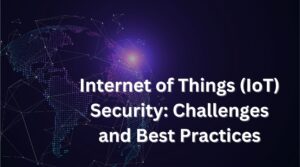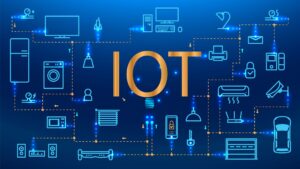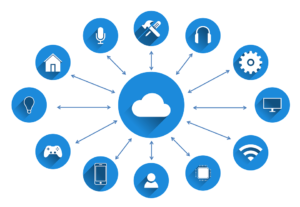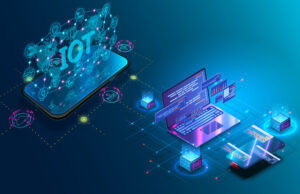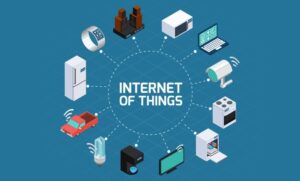How IoT is Contributing to Enhancing the Digital Economy?

The new-age connectivity has surpassed laptops and mobile devices. The world is changing, now every smart device aims to be connected to the internet. This is the power of IoT (Internet of Things) which allows us to control our home appliances, cars, gadgets, and also the enterprises right through our smartphones or tablets.
Talking about IoT adoption in businesses, in the last few years more and more companies are integrating IoT in their infrastructure which significantly leads to productivity gains and a wider economy. This disruptive technology has flattering its wings by connecting machines, tools, and sensors in all the industries, with a wide range of applications in manufacturing, automotive, retail, transportation, and logistics, etc.
This blog highlights how IoT empowers the digital economy by merging the physical and virtual worlds. And what are the benefits of the adoption of IoT in businesses?
Let’s get started.
5 Ways how IoT is transforming the digital economy?
In IoT, everything revolves around sensors that collect data from the device via machine learning. Then, that data is uploaded to the cloud to perform tasks as per the instructions. IoT is improvising businesses, citizens, and governments to connect remotely, collect the data, and generate insights for better decision making from transportation to smart cities. Here’re the top ways how IoT is changing the world and what will be the impact of IoT on various industries.
Smart Manufacturing and IoT
While some companies have already started realizing IoT in the production and supply chain domains, industrial IoT is expanding to other manufacturing sectors as well.
51% of manufacturing CEOs are well familiarized with IoT and 58% are holding this as a strategic initiative for their enterprise growth.
This means, IoT is no more conceptual but has now opened the door for next-level data collection and analysis. This technology promises to drive better performance, reduced cost, improved quality, and better resource allocation, which overall scale the nation’s economy. Some common examples of IoT in manufacturing are modern sensors, actuators, drives, and robotics, etc.
Smart Cities and IoT
Prediction states that more than 60% of the planet’s population will live in cities by the year 2030.
The consequences of this explosive urbanization will be a tremendous need for fresh air, water, food, houses, eco-friendly transportation, and waste management. IoT is seen as one of the most promising technologies that can offer sustainable opportunities to future cities by developing smart solutions for a comfortable life and safe environment.
Smart cities are prioritizing the application of the typical IoT (Internet of things) in numerous ways like weather monitoring, public transportation, remote medical treatments, robust IT connectivity, home automation, video surveillance, etc. In this way, IoT is improving the quality of life and is seen to have unlimited potential in near future, which ultimately leads to better
Smart Healthcare and IoT
Before digitization, patients were bound to visit hospitals, medical centers for every general concern and consultation. Or sometimes they text their issues to the doctors for medical assistance. But, now IoT has revolutionized healthcare with remote health monitoring and recommendations. The use of wearables like fitness bands, etc. can help patients keep track of their heart rate and pulse remotely.
Apart from monitoring the health conditions in patients, IoT is redefining healthcare by helping physicians, doctors, and hospitals to track the real-time locations of medical equipment, oxygen, and others. Not only this, but this technology is also preventing the spreading of infections among patients with remote medication and treatments, especially in pandemics.
The major advantages of implementing IoT in healthcare are improved treatment, remote monitoring, disease diagnosis, etc.
Smart Cars and IoT
If you remember, a cartoon series in the 2000s, Jones’ family which portrayed how the future will be. There were flying cars, voice-controlled gadgets, intelligent machines, and yes automated cars. Well, as a kid, it was a fantasy world for all of us, but not anymore. Now, the time has come, when these things are not a will-o’-the-wisp any more, but it has converted to reality to a very extent. The future is smart cars. Cars that don’t need a driver. IoT has made this possible.
Today, the IoT-based systems are implemented in cars that monitor pollution levels, alcohol levels, telematics, rain, and light intensity, sending all the information on the owner’s smartphone. This auto-transmission technology in cars helps in avoiding road accidents and sudden jerks. In fact, IoT-based cars contain a black box, which is connected to the user’s smartphone, to help start the engine.
Smart Logistics and IoT
There are 4 major components of Logistics viz. communication, inventory tracking, IT security, and supply chain monitoring system. To carry out this, Logistics needs a connected ecosystem for timely delivery of shipments, which was previously carried out by connected infrastructure, before IoT was even introduced.
The implementation of IoT in Logistics boosts the mobility of goods and shipments by enhancing security and preventing product theft. Using IoT, businesses can track the real-time location of the vehicles, remotely control the transfer of goods from source to destination, and can even reduce the shipping costs with automated order processing.
In addition to this, the Internet of Things is also hitting the ground with drone delivery, inventory tracking systems, and automated vehicles, which is no longer the future of eCommerce.
Are you ready for a connected world?
These are some of the applications of IoT that we look forward to. The digital economy is all about hyper-connectivity, and the IoT is all about connecting the world. It is connecting vehicles, appliances, devices, gadgets, etc through the internet. But, while technology is ever-evolving, we are going to see a lot in this direction in the near future.
It is the reason why IoT-based applications are in trend, and explicitly top IoT app development companies are taking advantage of this technology because the future is data and IoT is a bridge that fills the gap between the physical and virtual world. For more latest developments in IoT, stay tuned and keep reading.
Cheers!
Author Bio – Andrea Laura is a very creative writer and active contributor who loves to share informative news or updates on various topics and brings great information to her readers. Being writing as her hobby, Andrea has come out with many interesting topics and information that attracts readers to unravel her write-up. Her content is featured on many mainstream sites & blogs.

